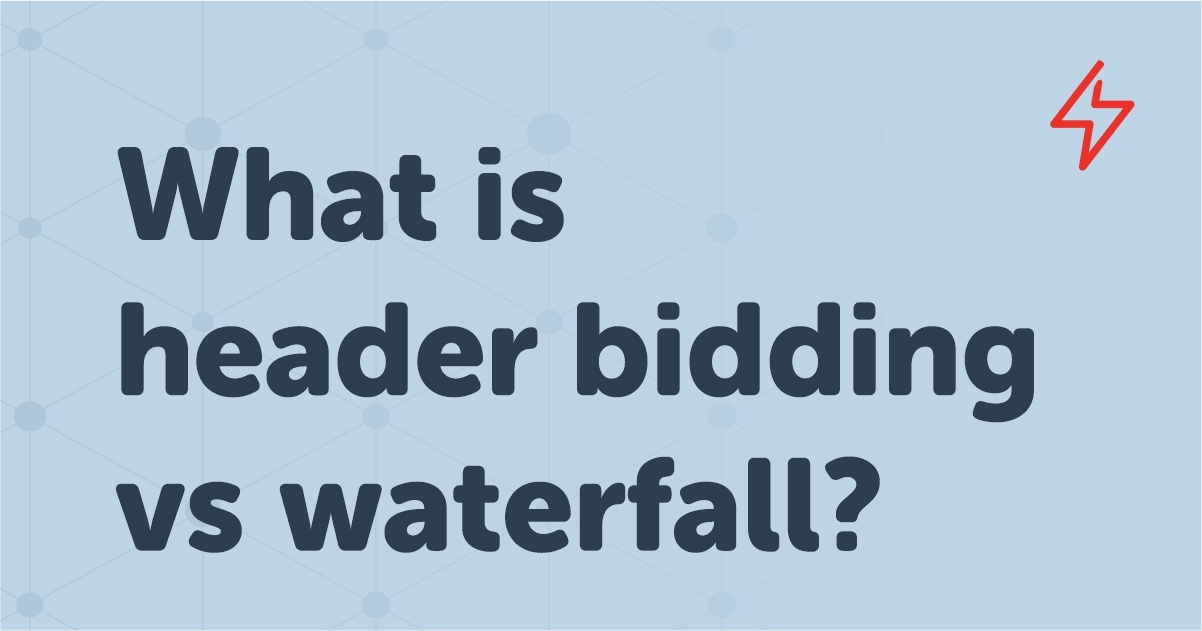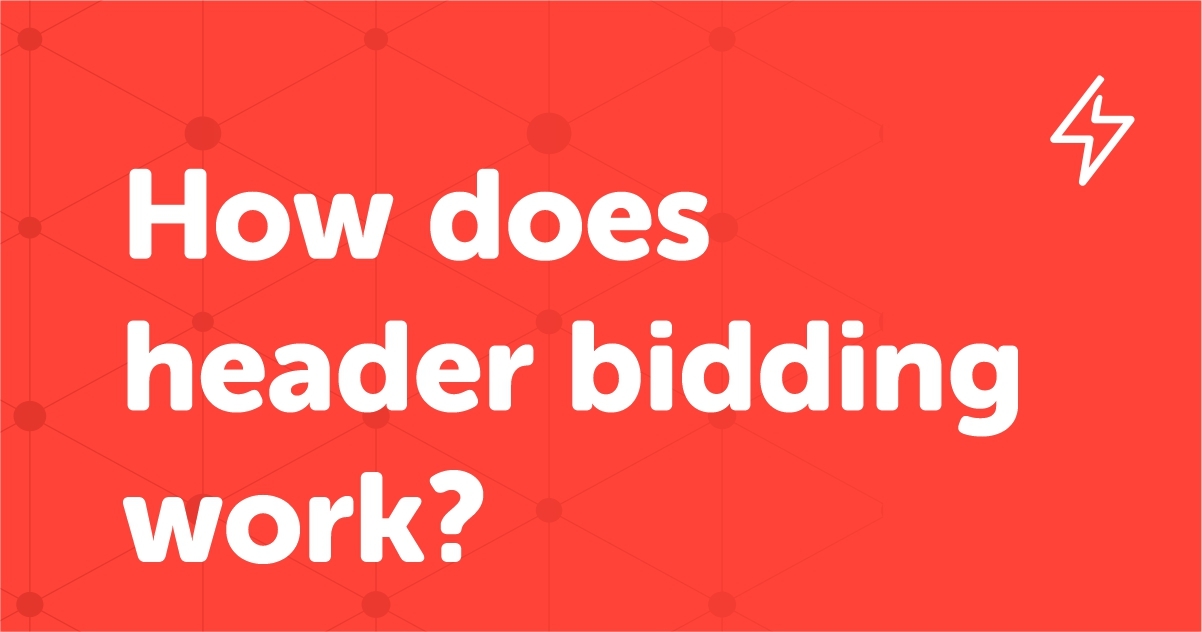Table of Contents

“Errors using inadequate data are much less than those using no data at all.” — Charles Babbage. The data landscape for advertisers, marketers, and publishers are in a frenzy as browsers are declining third-party cookies. Apple is also providing its users with Advertising Identifier (IDFA) Declarations. For marketers, it may seem like a valuable source of customer intel; however it is now disappearing in thin air.
But, don’t give in to this chaos; instead, go for a practical and sustainable option: requesting and asking the customer directly about their needs and context. These preference insiders and similar know-hows give advertisers, marketers, and publishers the ability to capture zero-party data.
Now, let’s dive in!
What is zero-party data?
We feel that the term ‘zero-party data’ is buzzing around a lot lately. The fact is that Forrester Research first coined the term ‘zero-party data’; meaning data that a customer intentionally and proactively shares with a brand or a publisher, including preference center data, purchase intentions, personal context, and how the individual wants the brand; to recognize them

You may say it sounds a lot like first-party data, right? The idea behind the zero-party data is that it acts as a balance and compliments the first-party data. It entails a cohesive voluntary dataset to recognize and categorize users as complete individuals. It may also include elements like personal interests or communication preferences.
Zero-party data expects to identify the kind of info that will enable brands, marketers, and publishers to do one-to-one marketing and targeting with customers, build client satisfaction, reduce churn, and improve customer lifetime value (CLTV).
But why is zero-party data important?
Nowadays, customers are becoming more anxious about sharing their personal data; they want to be fully aware of how the data is being gathered and used. In the past few years, customers have witnessed multiple cases of data breaches.
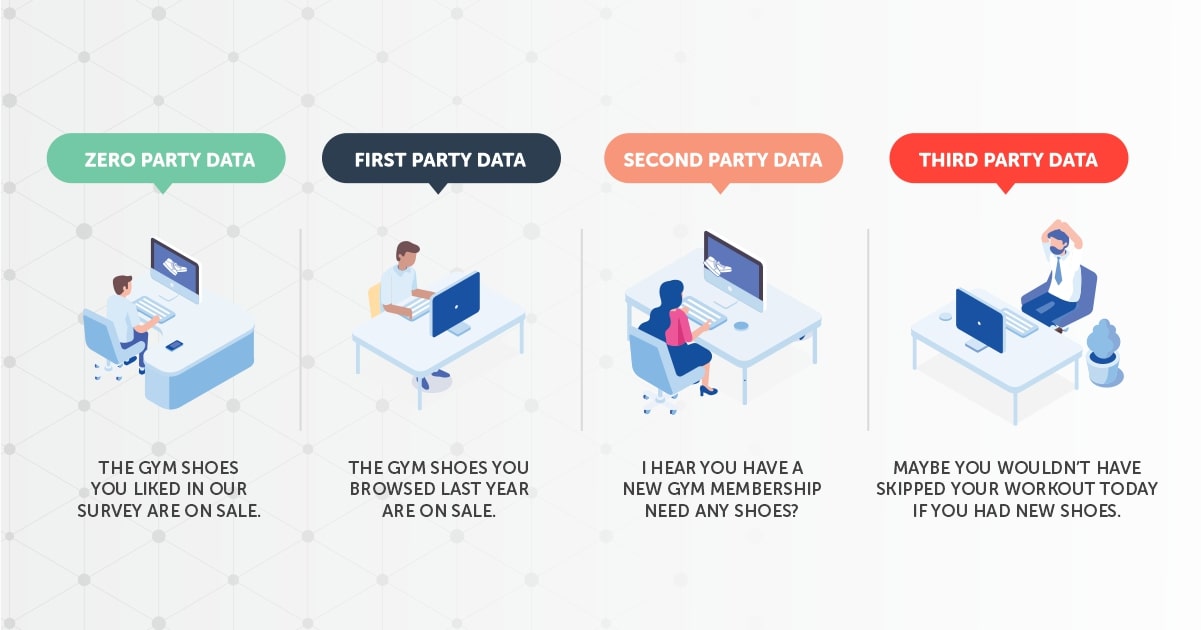
With enforcement becoming stricter and tighter on governing regulations and laws like the General Data Protection Regulation (GDPR) or California Consumer Privacy Act (CCPA), it is high time to initiate collecting the vital type of personal data that respects the customer’s space and keeps the company protected from legal issues as well.
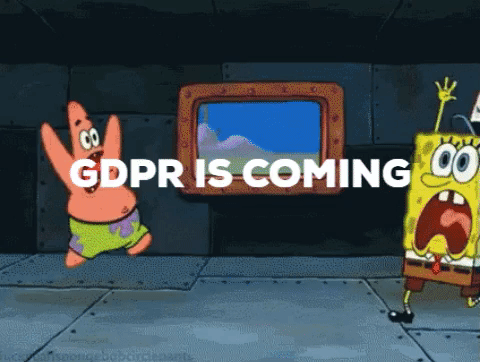
Zero-party data is not deploring; instead, it is evolving. It ultimately delivers authentic sources of truth that are gritty and certifiable. Zero-party data is not wholly dependent on surveys or on what receipts customers choose to upload. If marketers are linked at a transactional level, they can fill in the entire picture. There is immense potential to build and target viewers and customers with accurate offers at the right moments.
Zero-party data vs. First-party data
Let’s add a precise comparison between zero-party data and first-party data because these two data types are often muddled together, which is plausible. Notably, what should publishers and marketers be aiming for? Let’s start with the definition first.
What is first-party data?
First-party data is data collected straight away from the specific audience instead of being obtained and sent by a third-party source. These details are a clear reflection of a particular audience. A few sources you can gather first-party data from are subscription-based emails or products, CRM, customer feedback, website and app analytics, surveys, or social media profiles.
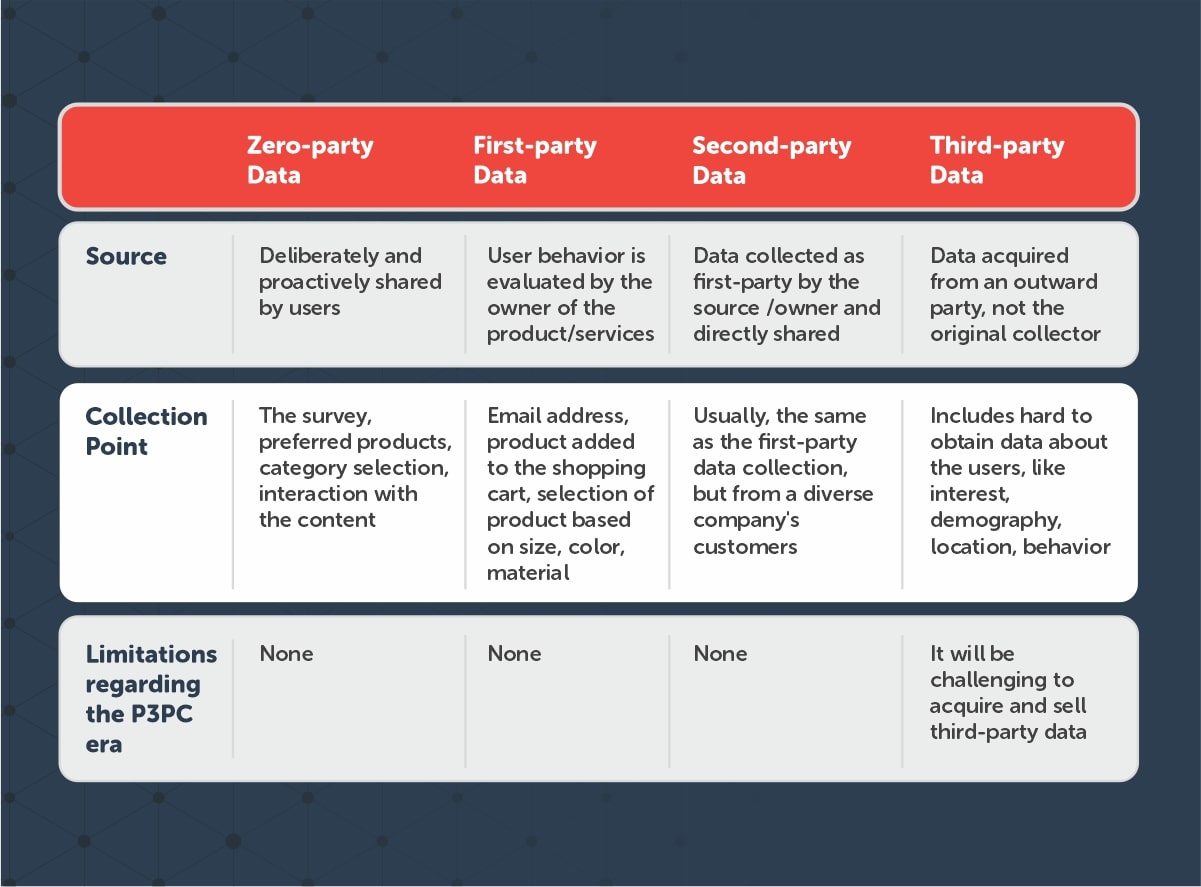
Whereas zero-party data is the data your customers deliberately and intentionally share with you. It may include information like purchase intentions, personal context, communication preferences, and how the customers want the brand to recognize them.
An excellent way to accumulate zero-party data is to ask for information in exchange for something of value to the customer. Information mining can be done via a survey, customized product recommendations, or a gated, free resource such as an eBook, case studies, or white papers.
The main distinction between first-party data and zero-party data is that collecting zero-party data involves a direct interaction with your audience. On the other hand, first-party data provides insights from analytics and user behaviors.
The compilation of zero-party data grants a real prospect for brands to track more effective campaigns by accumulating data from the source while constructing transparency and trust with their user base. While first-party data offers insight into the specific audience, it doesn’t inevitably build trust between brands and customers.
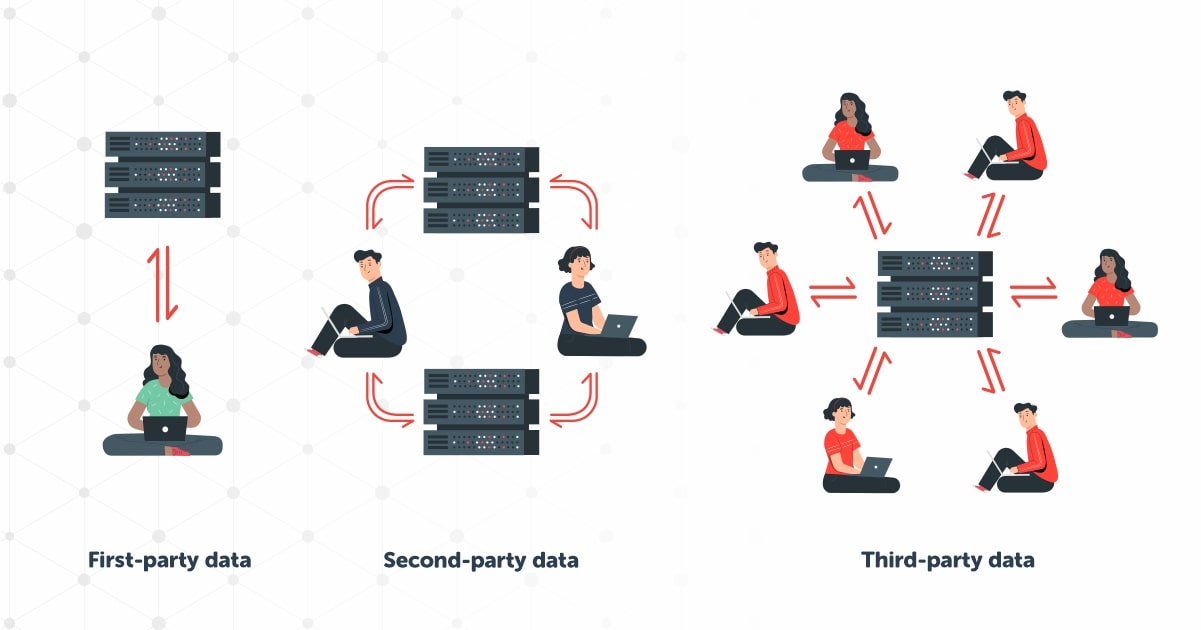
What is second-party data?
Second-party data is a type of data you obtain from a trusted partner. In most scenarios, you know the partner, and it is a viable source, which means you know the data quality, relevancy, and accuracy. However, second-party data is not directly obtainable. Instead, you must establish a profound relationship with another company or source and negotiate a deal in which data is exchanged. It gives access to specified, niche, and specialized data. Compared to third-party data, the quality is better but has a smaller scope. You can always keep a strategic set of obtaining data via a private partnership; it can be ideal when reaching out to specific markets with a new branding direction or product launch.
What is third-party data?
Third-party data is obtained via a specific data aggregator. Data aggregators do not accumulate data directly but acquire it from multiple companies and store it in a single dataset. The outcome is that the data can come from various data sources, some significant, mid-sized, and minor sources; hence, there’s not always a clear definition of the accurate audience or customer in it. Maximum third-party data is purchased via a Demand-side platform (DSP) or Data Management Platform (DMP) for advertising. There are also multiple third-party data sources, DSPs, and DMPs, including Acxiom, Nielsen, Google, Deloitte, Oracle, and more.
Having access to sizable pools of data or running ads that track customers’ data, an individual can gain information from people with no prior relationship; you can obtain data without registering, interacting, or buying anything. Investment in third-party data grew by 8% YoY, magnifying the growth rate in 2022, even though third-party data will practically become extinct soon. Remember, third-party data comes with a limitation, and now with the P3PC world, you have to be cautious.
What are the benefits of using zero-party data?
Due to post-pandemic scenarios, the P3PC era, changing privacy laws, and expectations, multiple brands have moved their focus toward customer retention and satisfaction. So, the new approach includes active and considered insights. Outcome: Rise in Zero-party data collection.
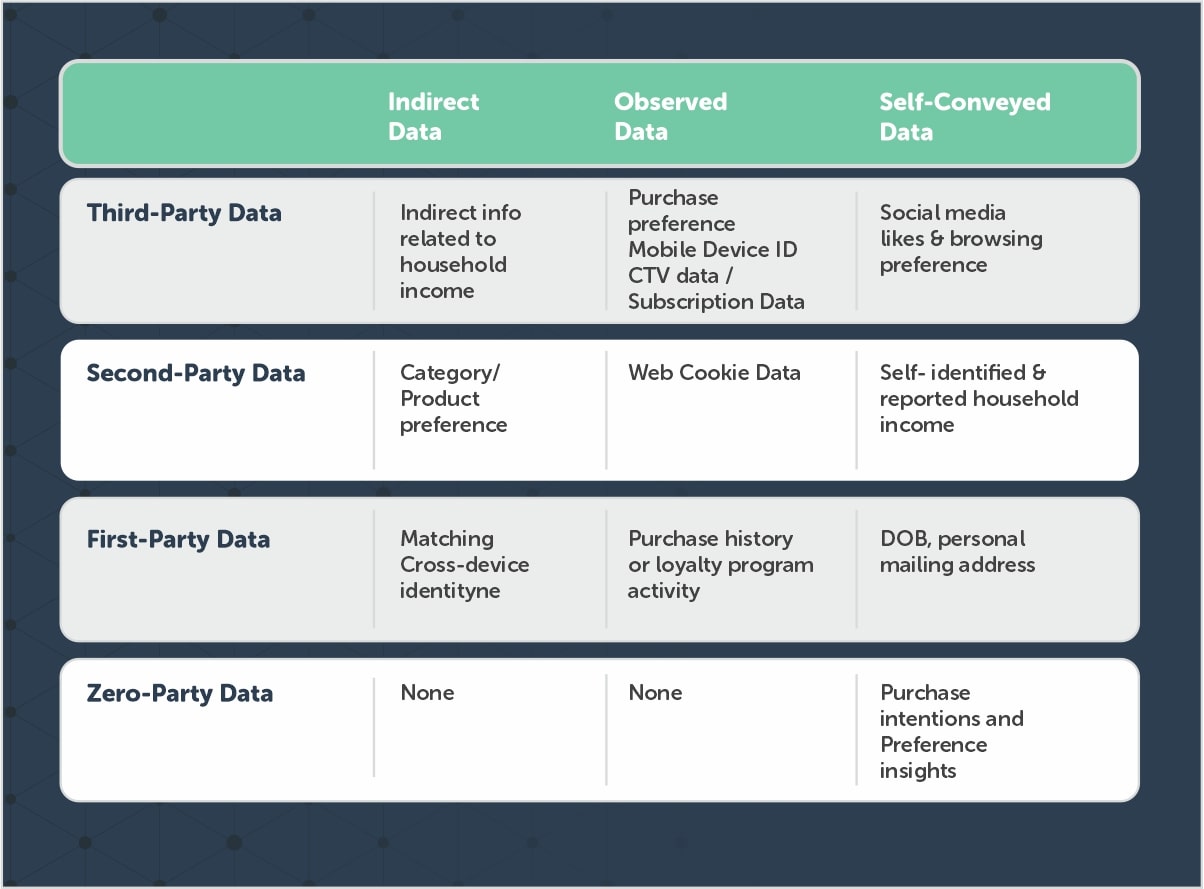
How to Collect Zero-Party Data?
Renowned publishers like The Drum, Forbes, New York Times, Washington Post, or The Wall Street Journal allow their readers to view relevant content and articles only once they fill in a few targeted details, like requesting them to complete a brief preference survey or entering email id.
Even pop-up subscription formats offer better value in exchange for Zero-party data. For example, requesting users for essential demographic information like gender, age, marital status, income, and industry name to show less intrusive and more targeted ads.
Another option can be offering personalization options in the registration forms. Like, allowing users or viewers to select which topics they are interested in reading about (politics, entertainment, travel, tech, food, and more.)
Also, executing polls, quizzes, and additional interactive features offer opportunities to collect information from users. Building a soft firewall that compels users to register if they want to read more is a good initiative for collecting zero-party data.
How can publishers leverage zero-party data?
Remember, your audiences, viewers, and customers are the only source of the truth. Publishers and advertisers rely on and trust audience engagement to hit their goals. It is highly beneficial to use direct audience or viewer’s insights as a source for measurement and KPIs. The more publishers understand their audiences and viewers, the better they are placed to create stable revenue for the long run.
Zero-party data is the most acceptable way to make that happen quickly. Defined as data that publishers openly gather from their audience and viewers as part of well-defined value exchange, in short, zero-party data is more precise and valuable than first-party data, comprising search or browsing preferences.
For instance, LinkedIn accumulates data from professional individuals worldwide to showcase their certifications, talents, skills, career progression, and job changes. All the individual members are free to enter their details at will.
We all know why we fill in our details on LinkedIn. It’s a win-win; we are receiving something in return like job notifications, job suggestions, a platform to showcase our skills, and recognition in our respective professional network. Members can contribute via blogs, hyper-relevant content, posts, videos, and display events they participated in.
Experienced professionals can mentor new applicants to their industry, while beginners gain professional insights. Individuals and companies can leverage the supremacy of the network communities for professional and personal growth.
LinkedIn uses this massive data assembled from users to offer premium and free membership with extra services like job recommendations, detailed analytics, the ability to send messages, InMail to targeted leads, and more.
Another example could be The New York Times, which offers more than 100 different newsletters, catering to the diverse requirements of its readers. It provides personalized newsletters on education, technology, science, health, business, entertainment, arts, and hobbies. The New York Times aced the ability to entice loyal customers, viewers, and members; plus, it engages its readers via personalized hyper-relevant articles with the help of zero-party data.
- Prioritizing user engagement: This is one of the most vital factors for successfully monetizing your websites. If the user is not inclined towards engaging with your content and ads, it’s fundamentally all a futile effort. Remember, publishers need to offer users and viewers highly personalized content minus annexing their privacy. Zero-party data can be leveraged to precisely provide such services to users.
- Finding the right source for the data: As a publisher, if you want to scale zero-party data, you will first need to figure out multiple ways to collect it. It can be quickly done by generating online surveys, offering customers with recommendations based on their interests, and valuable content that is appealing to the viewers and users. Using social media channels, download history, and various game-based solutions, such as contests or quizzes, can also be a workable source.
- Creating relevant content: Proposing users with an excellent interactive experience is one of the best ways to accumulate accurate zero-party data. Ultimately, publishers need to put the user in the mainframe and then produce relevant content, eventually persuading them to share more information.
- Accurate segmentation: Once the publisher has managed to assemble relevant and correct data from the user, publishers will need to segment users based on their personal information. It will allow the publisher to target a more influential group audience in a well-organized and competent mode. Publishers can also involve data management platforms for the accurate segmentation of their audiences.
- Combine zero-party data and first-party data: One more tip that publishers can apply is to use zero-party data and first-party data together. It will allow publishers to generate detailed and appropriate user profiles. Constructing buyers/user personas with the help of zero-party data can be operational and efficient.
The rise of zero-party data
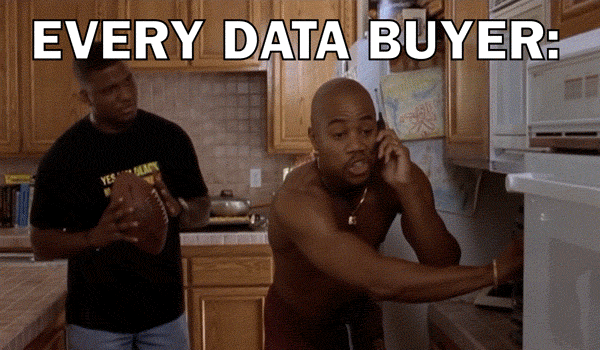
A mounting number of customers are apprehensive about the security and privacy of their personal data. Customers are becoming gradually more cautious of third-party data, as they have zero control over how it is being used or who has access to it. These fretful factors create a perfect squall for marketers, advertisers, and publishers to use zero-party data to serve customers better.
Currently, customers are eager to share personal information and interests with businesses in exchange for a personalized experience to their preferences. Customers want personalized and tailored content; however, they also want to select what information is shared to get that tailored experience with a brand. Leveraging zero-party data also removes the ‘eerie’ feeling that customers often feel while interacting with a company.
How can you use zero-party & first-party data for personalization?

In the age of declining customer trust and amplified regulations on data collection, marketers, publishers, and advertisers have an opportunity to improve the customer experience by leveraging their own first-party data and zero-party.
First-party data via analytics tools such as Google Analytics can be used to analyze customer behavior; it can also be used for optimization strategies such as personalization. Seizing customer drives, intentions, motivations, interests, and preferences at scale empower organizations to personalize each customer’s experience, eliminating speculation and delivering the data required to make real connections with customers.
Zero-party data, on the other hand, acts as another insightful layer of personalization, as it has the potential to leverage first-party data and customize marketing activities based on customer preferences. Zero-party data is efficient because the user is the reliable source of personal information, which is likely to be more accurate than any other source.
Third-party data has been a critical component of marketing data strategy in recent years; however, customers have become more aware of the privacy concerns connected with third-party data. Nowadays, marketers, publishers, and advertisers are forced to rely on first party and zero-party data. So, the rise of first-party data and zero-party data is the new customized weapon for personalization.
Conclusion
Zero-party data is deliberately shared by website visitors, users, and customers with a company. As you know, trusting third-party data comes with a termination date, given that Google is saying goodbye to its third-party cookies. Leaving first-party data as the lone viable option for publishers to use to monetize their content. However, it’s not always easy to ask for someone’s email address.
That’s why zero-party data is crucial.
Publishers can accumulate their user data without breaching any privacy laws and while offering tailored user experiences. Publishers have endured so much alteration in the digital world, and we can unquestionably stay strong. However, instead of just focusing on surviving, let’s dynamically build a position of strength with insightful customer data. When given a chance, viewers and users want to engage with publishers to improve their experience. Let’s own our success as a publisher for once and start actively prioritizing that relationship. Contact us to learn more about implementing a zero-party data strategy and personalizing your customer experience with AdSparc.
FAQ’s
Question 1 : What is zero-party data?
Ans : Zero-party data is the data your users or customers deliberately and intentionally share their personal information, preferences, and preferred choices with you.
Question 2 : How to collect zero-party data?
Ans : The best way to gather zero-party data is via a survey, customized product recommendations, or download form via a free resource such as an eBook, case studies, or white papers.
Question 3 : Which one is best: zero-party data vs. first-party data?
Ans: Zero-party data acts as another insightful layer of personalization above first-party data. It acts as a balance and complements the first-party data. Zero-party data entails a cohesive voluntary dataset to recognize and categorize users as complete individuals.
